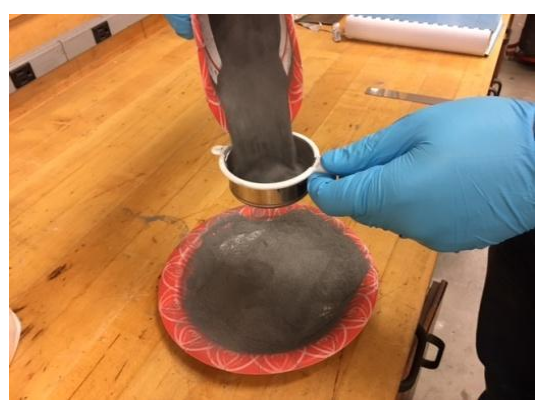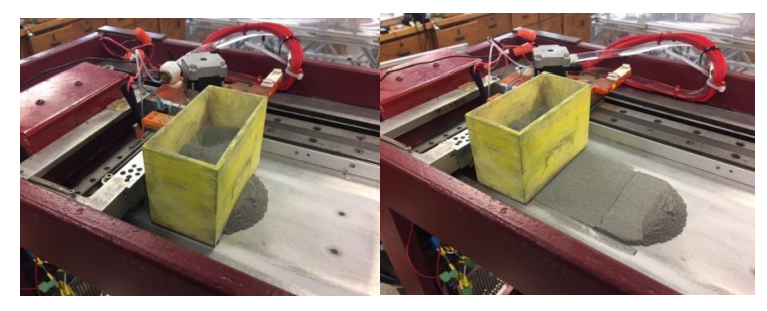 Reza Hajiha, a thesis student from California State University, explores more complex issues in 3D printing with metal in ‘A Novel Method in Additive Manufacturing of Titanium Matrix Composites with Ceramics Reinforcement by Thermal Decomposition of Aluminum Sulfate.’ Examining the miracle of 3D printing further, Hajiha discusses requirements for strength and durability in parts being created, specifically with metal matrix composites (MMCs).
Reza Hajiha, a thesis student from California State University, explores more complex issues in 3D printing with metal in ‘A Novel Method in Additive Manufacturing of Titanium Matrix Composites with Ceramics Reinforcement by Thermal Decomposition of Aluminum Sulfate.’ Examining the miracle of 3D printing further, Hajiha discusses requirements for strength and durability in parts being created, specifically with metal matrix composites (MMCs).
MMCs are garnering attention today because they are resistant to both temperature and friction and offer improved thermal stability. These types of parts offer all the benefits of 3D printing and additive manufacturing, to include lower cost, speed in production, and self-sustainability in manufacturing—a plus for users at any level. Hajiha’s research involves studying a new method in 3D printing MMC parts strengthened with ceramic particles, patented by Dr. Yoozbashizadeh and Dr. Yavari from California State University Long Beach and Northrop Grumman Company.
“The current methods have some disadvantages like the constraints of the materials that can be employed and the poor mechanical properties of some of such materials. Some of the aforementioned methods include high expenses due to the high cost of attributed machine,” states Hajiha. “Moreover, the lack of dimensional accuracy of the printed models is another reason that justifies further research and invention in the field of additive manufacturing for metallic parts. MMCs are one of the attractive fields for development and research due to the outstanding mechanical properties they have.”
MMCs have good potential for use in applications like aerospace, transportation, and wearables. They can be categorized regarding particle, layer, fiber, and infiltration composites. Hajiha discusses some different types of 3D printing, to include:
- Selective Laser Sintering (SLS/SLM)
- Direct Metal Laser Sintering (DMLS)
- Laser Engineered Net Shaping (LENS)
- Conventional 3D Printing
Hajiha also discusses disadvantages such as layer-by-layer printing, often resulting in deficiencies due to internal stressors. Such deformations and porosity can lead to decreased mechanical strength and inferior performance in parts. In production with MMC, there are some disadvantages such as a limited number of metallic additives that can be used, and just the smallest amount of excess non-metallic additive can cause disruption in the process. Higher shrinkage levels are reported too in the case of excessive voids—usually seen in more complex geometries.
Advantages of MMC are higher ductility and better strength, shrinkage can be reduced, thermal properties are not affected, and mechanical properties are improved. MMC also makes use of recrystallization, reducing embodiment and displacement reactions. The 3D printer customized for MMC processes includes the following:
- Binder solution delivery system
- Power supply system
- Dispensing valve and printing bed control system
- Powder delivery system
- The heating system
“In order to deliver the inorganic salt solution to the printer bed, the pressurized air is applied behind the solution inside a syringe,” explained the researcher. “The manual pumping pressurizes the air and an analogous gauge monitors the applied pressure. The solution passes the pipes and is delivered to a solenoid controlled by the controller board to connect or disconnect the solution flow. The solution must pass a filter to make sure that no impurity or particle reaches the solenoid to prevent any kind of clogging. To fulfill this purpose, a 10 µm filter is installed in the way of solution.”
The manufacturing process consists of:
- Desired part CAD model drawing
- G-code exporting for the model
- Manually applying modifications to the G-code to make it compatible with the prototype
- Putting modified G-code in Mach3
- Printing process
Spark Plasma Sintering (SPS) was applied in this research also, and the researchers point out that it has more benefits than HP sintering, to include higher temperature rise, higher sintering speed, and lower running cost.
“The research can step further to study the effect of printing parameters, such as speed and solution ratio, on the surface quality and mechanical properties of the parts,” stated the researchers. “Furthermore, the printing procedure can be improved by using inkjet printing head to fabricate more complicated and near-net-shape parts.
“The results of these aforementioned studies can be collected and contribute to develop models and software to simulate the fabrication process and predict the mechanical properties of the ultimate part.”
While additive manufacturing has been in use behind the scenes by organizations like NASA for decades, as it has hit the mainstream, metal 3D printing has progressed expansively—and rapidly so, playing a role not only in making parts for Navy warships but also the use of different materials and metal powders. What do you think of this news? Let us know your thoughts! Join the discussion of this and other 3D printing topics at 3DPrintBoard.com.
[Source / Images: A novel method in additive manufacturing of titanium matrix composites with ceramic reinforcement by thermal decomposition of aluminum sulfate]Subscribe to Our Email Newsletter
Stay up-to-date on all the latest news from the 3D printing industry and receive information and offers from third party vendors.
You May Also Like
3D Printing Financials: Steakholder Foods Balances Losses and 3D Printed Tech Advances in 2023
A pioneer in the field of 3D printed meat and fish, Steakholder Foods (Nasdaq: STKH) disclosed its 2023 financial results, a year highlighted by technological progress but overshadowed by financial...
3D Printing Financials: Protolabs’ Q1 3D Printing Revenue is Flat, Company Advances in Technology Push
Protolabs (NYSE: PRLB) has kicked off 2024 with a mild boost in revenue, revealing how the Minnesota-based company manages to adapt and thrive even in uncertain market conditions. While the...
Supply Chain Management and the Role of 3D Printing Digital Inventories
As the additive manufacturing (AM) industry grows beyond its humble roots as a rapid prototyping technology, it has been adopted by some of the world’s leading companies to produce not...
3D Printing Financials: Materialise’s Profitability Amid Revenue Dip in Q1 2024
Materialise (Nasdaq: MTLS) has released its first-quarter earnings for 2024, highlighting a challenging quarter with some key advances despite a dip in revenue. While navigating a mixed performance across its...



































